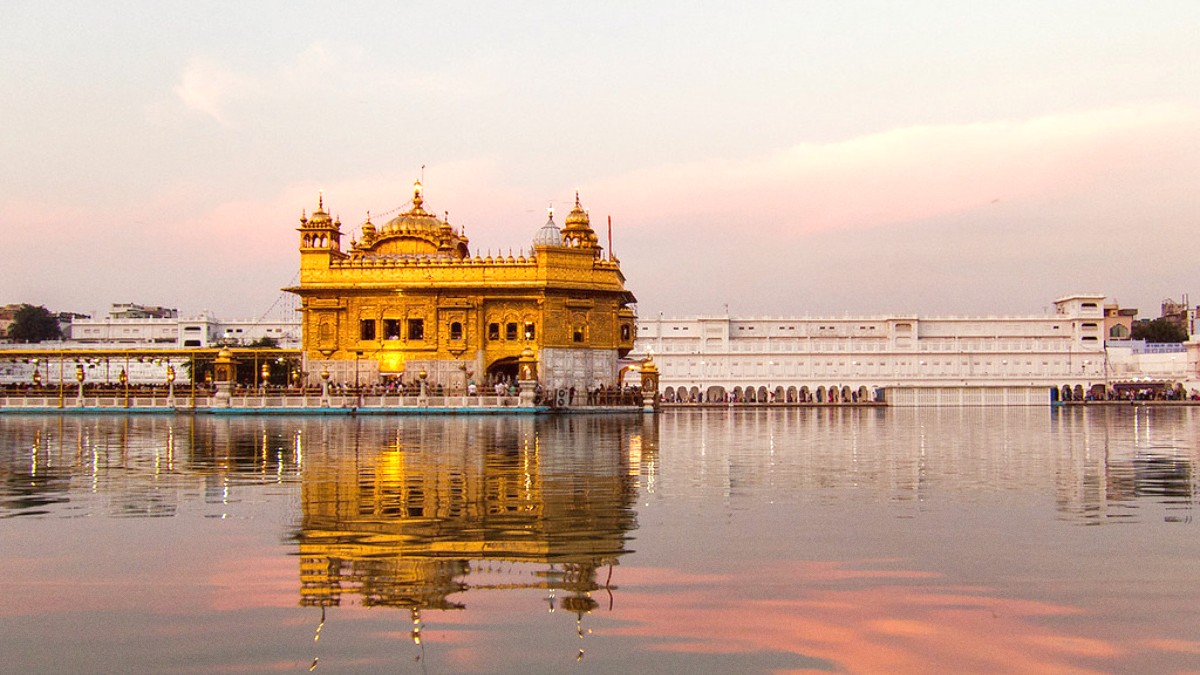
Punjab And Haryana, India
Amritsar is renowned for its rich Punjabi cuisine, known for its hearty, flavorful, and often generously butter-laden dishes. The food culture intertwines deeply with Sikh traditions of hospitality, most notably exemplified by the Langar at the Golden Temple, where thousands receive free meals daily.
Punjab's agricultural prosperity, specifically in dairy and wheat, directly influences the local diet, leading to a cuisine rich in dairy products and various breads.
Ghee (clarified butter), paneer (Indian cheese), yogurt, mustard greens (sarson), wheat flour, corn flour, and various legumes form the backbone of Amritsari cooking.
A wide array of spices, including cumin, coriander, turmeric, and garam masala, create bold, often creamy, and rich flavors.
Amritsari food is especially celebrated for its fried fish, unique kulchas, and thick, creamy lassis. Preparations often use generous amounts of butter and cream.
A crispy, leavened bread, often stuffed with spiced potato, paneer, or cauliflower. Baked in a tandoor, served with chole, tangy chutney, and butter.
Find at: Kesar Da Dhaba, Kulcha Land.
A winter specialty. Cornflour flatbread served with a creamy, spiced mustard greens curry, topped with white butter. A comforting and nutritious meal.
Find at: Traditional dhabas.
Marinated and deep-fried fish, often sole or basa. It has a crispy coating and tender, flavorful interior, seasoned with local spices.
Find at: Makhan Fish & Chicken Corner, Bubby Fish & Chicken Corner.
Beyond Lassi, try masala chai (spiced tea), a warming and aromatic staple found everywhere.
Indulge in Pinni (a sweet from wheat flour, ghee, and jaggery), Phirni (a creamy rice pudding), and Gulab Jamun (deep-fried milk solids soaked in syrup).
Limited in number, but some luxury hotels feature upscale dining options. These restaurants typically offer refined Indian cuisine or international dishes, providing a formal dining experience.
Many family-friendly restaurants offer traditional Punjabi cuisine alongside multi-cuisine options (Chinese, Continental). These places have a comfortable atmosphere, good service, and a wide menu.
Traditional roadside eateries (dhabas) offer authentic, inexpensive Punjabi meals. Street food stalls are abundant around the Golden Temple, Hall Bazaar, and Lawrence Road.
The free communal kitchen serves thousands daily, presenting a profound spiritual and humbling dining experience.
Anyone, regardless of faith, can partake in this meal, which promotes equality and selfless service.
Markets often house small eateries and numerous street food vendors, making them great places to sample a variety of local flavors.
Explore the bustling local markets for fresh produce and quick bites.
Some restaurants cater to Western tastes.
Commonly found in hotels and standalone restaurants.
Limited options outside major hotels.
Often the best bet for international dining.
Many Indian dishes are naturally gluten-free, like rice, lentils, and some vegetable curries. Cross-contamination is a risk in shared kitchens.
Popular breads like kulcha, naan, and bhature are wheat-based. Makki ki Roti (corn flour bread) offers a gluten-free bread option.
Communicate allergies clearly. Learning phrases in Hindi (e.g., "I am allergic to nuts," "no dairy") can be helpful, or use a Translation app.
Carry allergy cards written in Hindi to convey your needs to restaurant staff.
Research specific restaurants beforehand. Many online forums or travel blogs offer advice for travelers with dietary restrictions in India.
Use apps or websites that list allergen-friendly restaurants or provide translation services for dietary requirements.
Several local operators and guesthouses offer Punjabi cooking classes. These classes focus on preparing traditional dishes.
You can arrange visits to local dairy farms or agricultural fields through tour operators.
Local food festivals may occur during specific times of the year, often coinciding with harvest or religious celebrations.
Sarson ka Saag enjoys popularity in winter, offering a rich and nutritious meal.
Look for other seasonal greens and warming dishes.
Specific sweets and traditional dishes appear during festivals like Diwali and Gurpurab.
These offer a taste of traditional celebrations.
Always carry hand sanitizer when exploring Amritsar's food scene. Use it before eating, especially when trying street food, to maintain hygiene.
Do not hesitate to try street food, but choose stalls that look clean and have a high turnover of customers. This usually indicates fresh food and good hygiene.
Always drink bottled water, even when dining at restaurants. Avoid tap water and ice made from tap water.
Exploring Amritsar's food scene is a true adventure. Be open to new tastes and experiences, but always prioritize your health and safety.